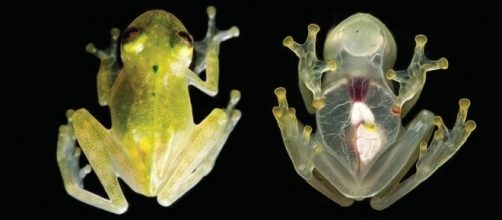Scientists have recently discovered an incredible new species of glass frog that has, quite literally, has nothing to hide. Found in the Amazonian lowlands of Ecuador, the newly-found Glass Frogs were discovered by ecologist and biologist Juan M. Guayasimin and his team.
“I work with frogs every day and this is one of the most beautiful species I have ever seen,” Juan Guayasamin, of the Universidad San Francisco de Quito, in Ecuador, told New Scientist.
About the Amazonian amphibian
According to the researchers, the remarkable amphibian has an unusual call, atypical reproductive behaviour and "well-defined dark green spots” on its head and back which are unique to this newly-found species.
Measuring around 0.8 inches (20.32 millimetres) in length, the tiny frog has transparent abdominal skin reaching up to the chest, making its bright red heart completely visible underneath. Other than the heart, one can also see the minuscule amphibian’s kidneys, reproductive system, and urinary bladder, while observing its underside.
Scientists have placed the frog in Hyalinobatrachium genus. All frogs in this genus are about the same size and have transparent or a partly transparent underbelly. However, having a heart that is clearly visible is very unusual, noted the researchers who wrote a study describing their new discovery.
Named Hyalinobatrachium yaku, the tiny critters are most closely related to Hyalinobatrachium pellucidum, a glass frog species found in Ecuador and Peru.Though the scientists are uncertain about why the glass frogs have see-through undersides, it is believed that this trait may help them avoid or confuse predators like birds and snakes.
Scientists warn that these glass frogs are at risk
Numerous threats like water pollution, oil extraction and the resulting road development, are degrading and destroying the habitat of these fragile species, increasing the risk of extinction. The researchers warned in their paper that although the Amazon basin is globally recognised for its biological and cultural diversity, the current and future threats to conservation are "conspicuous."
Furthermore, the scientists stressed that measures for conservation of biodiversity that have been put forward by the scientific community need to be seriously considered by the Ecuadorian Government.
The researchers also added that there’s a possibility that there are more glass frog species in the region that are yet to be discovered and human activity could pose a serious threat to these amphibians.


